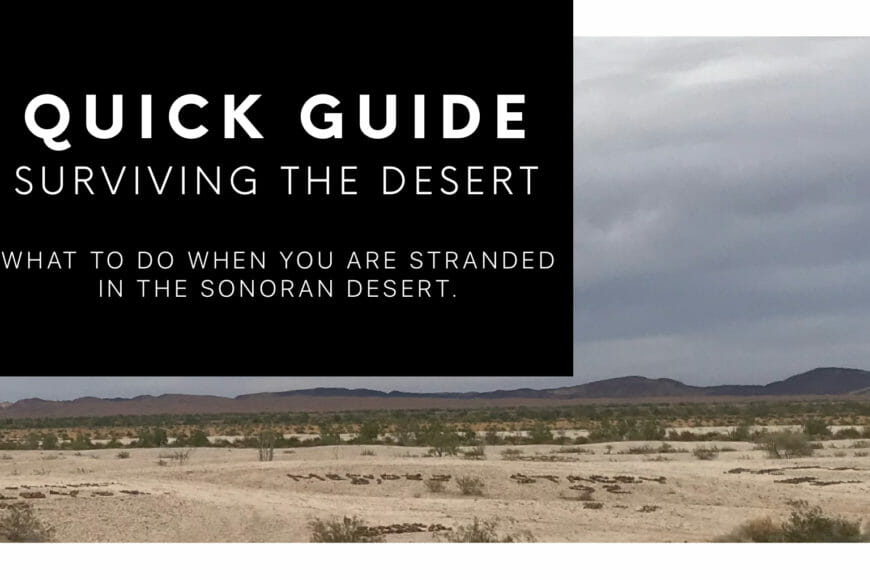- September 18, 2013
- By admin
- In Uncategorized
- 2965
- 0

If you have ever been outdoors during summer in Yuma you know how hot and dangerous it can be to be stranded in the Desert. At times outside temperatures can easily reach over 115F.
Here are a quick list of survival actions you should be aware of and familiarize yourself before you head out in the heat:
Your first priority when stranded in the desert is to find drinking water sources. . A human can only survive 3 to 4 days without water. Any attempt you make at surviving in the desert is going to fail unless you can keep yourself properly hydrated. One of the main sources of water in this area is the Colorado River. It also happens to be the most endangered river currently in the United States. There are small canals near the agriculture farms and city but water sources are rare in the desert. The desert in Yuma is goes on for miles with out any source of river or city water.
Here are the 5 most common sources of drinking water.
Dried-Up River Beds If you are able to find a dried-up riverbed, check to see if the ground is still damp. Water can be easily acquired by digging a hole in the surface of the river bed.
Morning Dew Collect any dew that forms on plants in the early morning before the sun rises and it evaporates. Every drop counts and while this method doesn’t provide much, it is still essential that you add whatever water you can to your reserves.
Cactus Pulp Cacti can be a valuable source of water. By cutting open the cactus, the inside pulp can be sucked out and extracted to provide a source of water.
Solar Water Still If you have a sheet of plastic or tarp (no holes) available, then make a solar water still.
Collect Rain Water This option is your last option to obtain water. It rarely rains however when it does rain in the desert it pours. Catch rain water with any materials that can be laid out flat over a wide surface area. Use the material to funnel the water into your container.
Find shelter and conserve your energy during the day. Wait to see if rescure arrives. Travel at night in one direction until you can find someone to help. Traveling during the day will expose you to the sun especially, the hot Yuma temperatures. This will increase your body temperature and as a result, you will sweat more, resulting in a loss of hydration. If possible, find shade during the day to keep yourself out of the direct sunlight. This will keep you from sweating so you won’t lose your hydration faster.
Shelter plays an important role in keeping your body temperature regulated. When it’s daylight, try to stay out of sun and find shelter in the shade. Large rocks or hanging cliffs can help to block any direct sunlight. The natural tendency in a hot environment is to remove clothing, but refrain from doing so. Your clothing will keep you from perspiring and losing hydration. It will also protect your skin from sunburn. If you have a selection of clothing, always opt for lighter colors. Darker colors will absorb more heat.
Food requires the need for water, so unless youu have established an abundant source of water, it is recommended that you do not eat. Most cactus fruit is safe for eating like cactus tuna or prickly pears. The fruit can be a source of food as well as a possible source of water.
Walk in same direction If you don’t have a compass and there is no chance of rescue, then the only possible solution is to walk out of the desert. While walking, be sure to use the sun as an indicator of west and east. Use distant landmarks (eg. rock formations, cliffs) to use as a reference guide. Use a distant landmark behind you, that you are walking away from, as further confirmation that you are heading in a straight direction.
The desert can seem void of life during the day, however, most of the predators in the desert are nocturnal and only come out at night.
Predators to be cautious of Bobcats, Mountain Lions, Coyotes, and Javelinas (Wild Pigs) are among the predators to watch out for. In some regions, the desert is habitat to scorpions and brown recluse spiders. Always make sure to keep your shirt tucked in and your pant legs pinched. While sleeping at night, try to keep as much of your body clothed and off the ground as possible to avoid getting stung or bitten.




